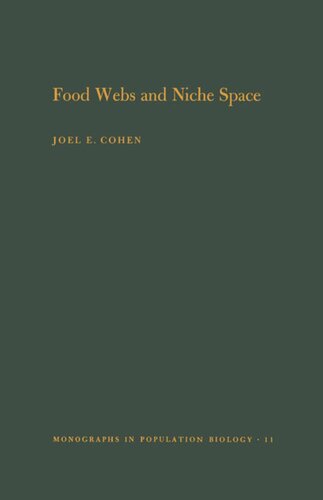

Most ebook files are in PDF format, so you can easily read them using various software such as Foxit Reader or directly on the Google Chrome browser.
Some ebook files are released by publishers in other formats such as .awz, .mobi, .epub, .fb2, etc. You may need to install specific software to read these formats on mobile/PC, such as Calibre.
Please read the tutorial at this link: https://ebookbell.com/faq
We offer FREE conversion to the popular formats you request; however, this may take some time. Therefore, right after payment, please email us, and we will try to provide the service as quickly as possible.
For some exceptional file formats or broken links (if any), please refrain from opening any disputes. Instead, email us first, and we will try to assist within a maximum of 6 hours.
EbookBell Team

4.8
54 reviewsWhat is the minimum dimension of a niche space necessary to represent the overlaps among observed niches? This book presents a new technique for obtaining a partial answer to this elementary question about niche space. The author bases his technique on a relation between the combinatorial structure of food webs and the mathematical theory of interval graphs.
Professor Cohen collects more than thirty food webs from the ecological literature and analyzes their statistical and combinatorial properties in detail. As a result, he is able to generalize: within habitats of a certain limited physical and temporal heterogeneity, the overlaps among niches, along their trophic (feeding) dimensions, can be represented in a one-dimensional niche space far more often than would be expected by chance alone and perhaps always. This compatibility has not previously been noticed. It indicates that real food webs fall in a small subset of the mathematically possible food webs.
Professor Cohen discusses other apparently new features of real food webs, including the constant ratio of the number of kinds of prey to the number of kinds of predators in food webs that describe a community. In conclusion he discusses possible extensions and limitations of his results and suggests directions for future research.